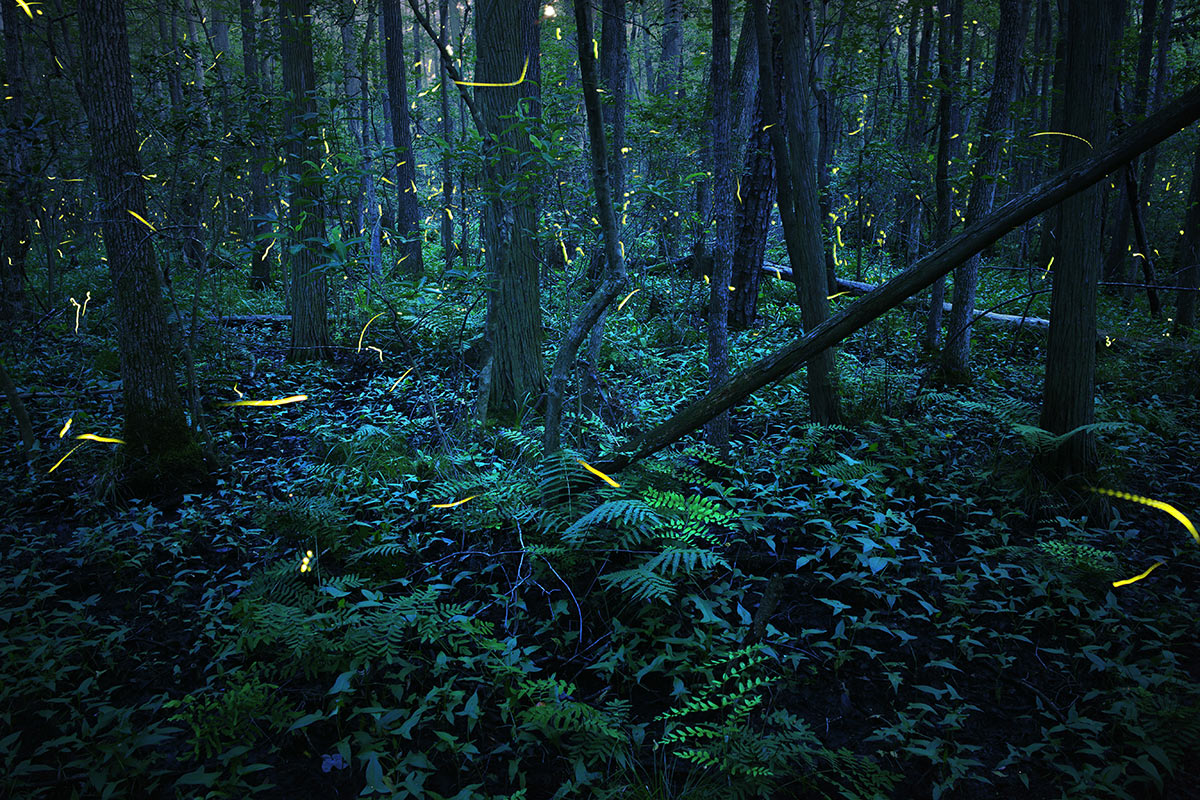The Xerces Society has submitted a petition for the listing of the mysterious lantern firefly (Photuris mysticalampas) as an endangered species under the federal Endangered Species Act (ESA). This firefly is a rare, range-restricted species first described by Dr. Christopher Heckscher in 2013. It occurs on the Delmarva Peninsula along the Atlantic coast of the U.S., where it has been documented from just six sites in two counties in Delaware and Maryland.

This nocturnal, flashing species is a habitat specialist, occurring within high-quality forested floodplains in the Nanticoke and Broadkill-Smyrna watersheds. Assessed as Endangered by the IUCN Red List of Threatened Species (a non-regulatory designation distinct from the federal ESA), it is one of only two firefly species endemic to the Delmarva Peninsula — the other being the Bethany Beach firefly, Photuris bethaniensis, which is currently under review for ESA listing. The forested floodplain habitat that the mysterious lantern firefly uses was once abundant across the peninsula, but now occurs in remnant patches that are further threatened by sea level rise and increased storm surges from climate change.

Mysterious lantern fireflies are so named because of the prolonged, yellowish-green flashes given off by adult males searching for females. Relatively small for a Photuris firefly, this species can be distinguished by these distinctive flashes and association with floodplain forests. Adults are active after dark in June and July. Like many other firefly species, mysterious lantern firefly larvae are generalist predators of soft-bodied invertebrates such as snails, slugs, and earthworms. While adults of many species are not known to eat, some female Photuris, including those of P. mysticalampas, have been observed mimicking the flash patterns of other firefly species to lure them in for a meal. Once ingested, these females are able to sequester special toxins called lucibufagins and pass them on to their offspring as a protective measure.
The mysterious lantern firefly is imperiled by multiple threats including habitat fragmentation, pesticide use, climate change, light pollution, small population size, recreation, invasive species, and a lack of protective regulatory mechanisms, among other factors. While this species has been recorded on federal, state, and private conservation lands, there are no species-specific management activities aimed at protecting it. Additionally, the passive protection allotted from these managed areas cannot protect this firefly from new and emerging threats including sea level rise and increased frequency and severity of storms that can destroy or degrade the forested peatlands upon which this species depends. ESA listing, coupled with designation of critical habitat, would protect the mysterious lantern firefly from extinction by addressing current and future threats to its persistence. Without this protection, the mysterious lantern firefly is at risk of blinking out.
More Information
- Read the ESA petition
- Photuris mysticalampas species profile (note that the species is now found in Maryland, which is not reflected in this profile)
- Learn more about this species and other at-risk fireflies in State of the Fireflies of the US and Canada
- More information is needed about the distribution, phenology, and life history of this species. If you would like to learn more and join research efforts to better understand this and other fireflies, please check out the Firefly Atlas




